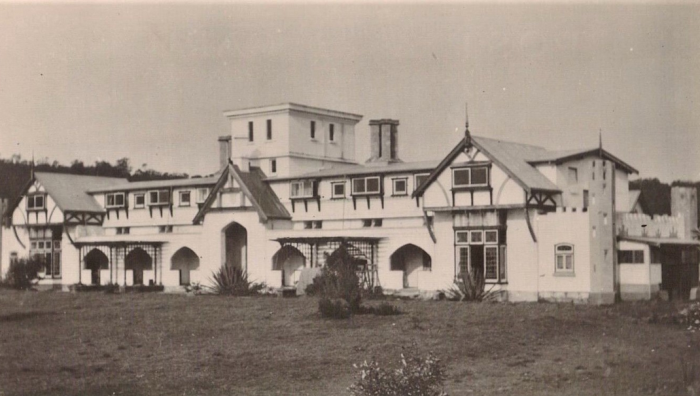South Coast NSW History Story
BOYDTOWN
Boydtown
Entrepreneur Ben Boyd envisaged his town on the shores of Twofold Bay would become the largest port between Sydney and Melbourne and between Sydney and Hobart. It was to be the export centre for cattle and sheep from his substantial landholdings on the Monaro and in the Riverina. It would be the principal site of his whaling operations. It would be the home port for his fleet of steamships that would connect Boydtown with markets throughout the world. He may even have thought that it could ultimately become Australia’s capital city.
On March 8th 1843, Boyd purchased 640 acres of land on Twofold Bay at £1 per acre. This was the land for Boydtown, a town that was intended to ultimately include cottages for up to 400 workmen, and for East Boyd, the site of his whaling station.
He also purchased substantial holdings in nearby Eden, which he refused to develop, to ensure that growth in Eden would not overshadow that in Boydtown.
Oswald Brierly, his Whaling Master, recorded the progress of construction in his diary: the Seahorse Inn (named after one of Boyd’s steamboats) was commenced in March 1843 and completed in October 1844; a first set of stores was completed in June 1843, and another in September 1844; construction of a wool store was in progress in September 1844; the boiling-down works at his whaling station was completed in February 1844; a 400-foot wharf was completed in 1844; work stated on the Church in September 1844 and the exterior was completed in 1847.
A row of houses (which Boyd christened ‘Jerusalem’) was built, and 45 miles of road leading into the Boydtown port were also constructed.
A 23-metre tower was constructed in 1847 of Pyrmont sandstone imported from Sydney on Twofold Bay’s southern headland. This was intended to be a lighthouse, but the NSW Government deemed it unsuitable for the purpose. It later was used by the Davidson family to alert their whaling crews at Kiah Inlet to the presence of migrating whales.
By 1848, as a result of a combination of circumstances, Boyd had become bankrupt. The development of Boydtown ceased.
An interesting use of housing at Boydtown shortly after Benjamin Boyd departed was highlighted by local historian Pat Raymond in The Valley Genealogist: ‘the Adelaide was the last of the convict ships to arrive in New South Wales and when it docked in Sydney on 24 December, 1849 there were 259 male convicts on board, 40 having already disembarked at Hobart. On the 2nd January 1850, fifty of these convicts…boarded the coastal steamer Shamrock bound for Twofold Bay. These convicts had been awarded their Tickets of Leave on the 30th December, 1849…
Ben Boyd had earlier departed from Boydtown so the buildings were now being leased by Edward Layton of Layton & Co. and arrangements were made for these 50 convicts to be housed at this site. At this time Anthony Falkner was the Landlord of the Seahorse Hotel and the exiles were housed in the workers' huts at the back of the Store…The whole aim of these convicts being sent en masse to Twofold Bay was for them to relieve the shortage of labourers on the coastal area as well as up on the Monaro. As employment was found, they moved away from Twofold Bay to start their lives afresh.’ Pat was able to identify many of those Ticket of Leave convicts who had been shipped to Boydtown.
The ‘complete’ Church was never consecrated or officially used. In 1926 it lost its roof in one of the periodic bushfires that swept through the area.
In 1936 Richard Whiter, a Victorian camping-park proprietor, planned to restore Boyd’s Seahorse Inn. By 1957 it had been partly restored but work was not completed until Bruce Lyon, originally a Sydney-based real estate agent, did so in 2006.
Image: Seahorse Inn, Boydtown
